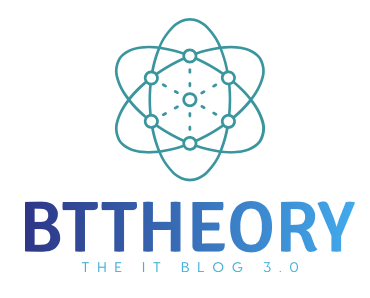Green IT is a global movement that aims to reduce the environmental impact of technology.
As IT professionals, we need to assess whether green technology is right for us and what its potential impact might be. We all share the responsibility of ensuring that technology is used in a way that addresses business needs without compromising the environment.
This article is based on BCS Green IT specialist group event which was held on 23rd March 2022 and numerous online resources.
What is green IT?
Green IT (Green Information Technology) is a global movement that incorporates technology into the sustainability equation reducing its environmental footprint.
In 1992, the Environmental Protection Agency introduced Energy Star, a voluntary labeling program that helps organizations save money and reduce greenhouse gas emissions by identifying products that offer superior energy efficiency.
The implementation of best practices is an ecological approach to technology. It involves cloud storage, improved energy consumption, modernization of equipment to increase its useful life, and an efficient disposal policy.
Green IT is a component of a wider movement to raise awareness of climate change, the need to restructure production chains, and the potential to create a circular and regenerative economy.
Why you should care?
Over time, technological advances have always required a lot of resilience from terrestrial ecosystems. This goes from the era of big machines in industrial factories to computers, peripherals, and electronic components in the digital age. The impact, of course, is different. But it is part of the current effort to combat climate change to implement even more bold measures to make up for the lost time.
In 2007, Gartner, Inc. estimated that the IT industry was responsible for about 2% of carbon dioxide (CO 2) emissions. The main cause of these emissions is high energy consumption resulting from the equipment production process.
According to the University of Michigan, effects on the environment were significant.
- Electricity used for U.S. servers and data centers creates 35.9 million metric tons of CO2e annually.2,12
- Computer electricity consumption varies greatly with age, hardware, and user habits. An average desktop computer requires 66 W when idle and 1.9 W in sleep mode. Laptops require less power on average – 33 W when idle and 1.0 W in sleep mode.13
- A 17” light-emitting diode (LED) LCD monitor uses about 13 W while on, 0.4 W in standby, and about 0.3 W when off.14
- Every kWh used by office equipment requires an additional 0.2-0.5 kWh for air conditioning.15
- The life cycle energy burden of a typical computer used for 3 years is 4,222 kWh. Only 34% of a computer’s life cycle energy consumption occurs in the 3-year use phase. Production dominates life cycle energy due to the high energy costs of semiconductors and the short use phase.16
- Manufacturing represents 60-85% of life cycle energy demand for a personal computer and 50-60% for mobile phones. Remanufacturing energy is a fraction of manufacturing energy: 5-30% for personal computers and 5% for mobile phones.17
- Some emerging technologies can reduce manufacturing burdens. Globally, 3D printing has the potential to reduce total primary energy use by 2.5-9.3 EJ and CO2 emissions by 131-526 Mt by 2025.18
For more information please visit CENTRE FOR SUSTAINABLE SYSTEM of Michigan University.
In light of the increasing emphasis on environmental responsibility and the widespread transfer of environmental impact concerns from individual consumers to corporate leaders, IT departments can play a key role in helping organizations reduce their “carbon footprint.”
What are the benefits of Green IT?
In addition to environmental ethics, companies have also found that sustainable management of their IT sector is a return on investment in terms of productivity, cost reduction, and efficiency. Although it can be difficult to implement green initiatives because of an initial investment necessary, the benefits appear as these actions are carried out. Saving generates cash flow for new improvements.
In addition, green IT presents an opportunity for companies to develop a strategic identity in the industry, which demonstrates their understanding of societal values. The “seal of approval” also improves the company’s reputation, assisting it in attracting investors;
Among the advantages of Green IT are
- Reduced and more intelligent energy consumption
- Increased space in the cloud by freeing space
- Reduced cost of the equipment with local servers
- Modernization of equipment and more extended maintenance periods
- Increase in performance and productivity
- Valuing the brand, image, and reputation
What we can do?
There are a number of practices that can help your department reduce its environmental impact.
- Reduce energy consumption
It’s important to keep your data center’s cooling system working well. If your company uses its own physical server, make sure the data center is well-ventilated. The location must provide adequate room so that the server space can be saved and energy—especially related to air conditioning—is minimized. As stated earlier, a healthy work environment requires a controlled temperature of the environment. For this reason, in several companies, the air conditioning systems are the responsibility of Information Technology.
2. Appropriate disposal
Avoid waste by reusing electronic equipment that is still in good condition. In the case of a total loss, it is advisable to dispose of specialized equipment, peripherals, and other outdated electronic components at the appropriate collection point for proper recycling.
3. Transition to digital
Businesses and people must realize that transitioning to digital does not mean moving to the cloud. While consumers often link green or eco-friendly efforts to cloud computing, this technology is not necessarily more environmentally friendly than other data center technologies. (If the cloud provider has to be in compliance with Green IT, to get the full benefit of Cloud Computing.) Deploying digital technologies such as ultra-fast connectivity, big data, machine learning, and artificial intelligence is playing a key role in this.
4. The “green seal”
When closing deals, take a careful look at your production and supply chain. Choose suppliers and partners aligned with your company’s positioning, those who follow good environmental practices. Find and create paths with less carbon footprint.
In addition to implementing sustainable business practices, consumers can reduce their energy expenditure through these consumer-oriented best practices:
- Set computers to sleep. Sleep is the lowest use of energy (besides powering down and unplugging). So, set monitors to turn off after 15 inactive minutes and hard disks even sooner: 5 minutes of inactivity. Your computer shouldn’t be awake after more than 30 minutes of activity.
- Upgrade to smart power strips. These smart strips cut down on vampire energy that computers, TVs, and peripheral devices all consume.
- Share printers. Whether at home or the office, consider how often printers are necessary. Whom can you share with?
- Work remotely. Unless your daily commute is by foot (walking or biking), try working from home to reduce GHG emissions associated with commuting—with approval from your boss, of course.

Learn more about Greening your IT workspace here. (An Article published by BCS Green IT specialist group)
Since the world’s attention has turned to sustainable development, IT departments have gotten a new task: developing green technology in order to carry out day-to-day business activities. Yes, it also involves creating software that is not only user-friendly but environmentally friendly as well.
Since IT departments will play an increasingly relevant role in companies, they must be willing to provide their departments with the inputs required to promote the adoption of good sustainability practices.
Green IT is good business for Information Technology departments and companies, investors, and the planet.
BCS has already taken lead on this matter and published many more articles, awareness programs, and community programs.
If you are interested to learn more and involve more you can join with BCS Green IT specialist group. It is a community of IT professionals and enthusiasts who are passionate about green IT.
For more information please visit the following websites.
Read Greening Government Commitments 2021 to 2025 UK Government Policy Paper here
Read Greening Government Strategy: A Government of Canada Directive here
Read United States Environmental Protection Agency (EPA) Federal Green Challenge here
Read “How are countries in Southeast Asia embracing green technology?” From CIO Article here
Photo by Pietro Jeng on Unsplash



0 Comments